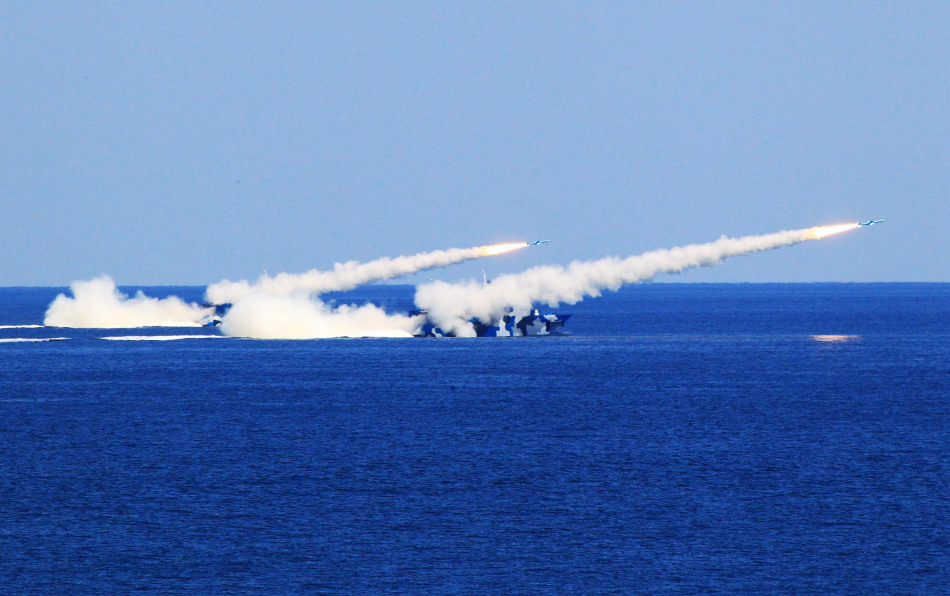
The Pentagon finds itself in the “shocking and eye-opening” position of needing more electrical power to protect distributed naval and ground forces from long-range attack at a time when China dominates the global production of advanced batteries needed to meet that mission, a panel of security experts said Thursday.
Heather Penny, a senior fellow at the Air Force Association’s Mitchell Institute, said that as a pilot, “electricity was just as important as jet fuel” in laying out and reviewing missions. Yet, she pointed out that China’s dominance of the production end is matched by its control of mining ventures extracting cobalt, lithium and manganese critical to manufacturing advanced batteries with long lives for electrical power in combat.
Speaking at the Hudson Institute online forum, Bryan Clark, director of Hudson’s Center for Defense Concepts and Technology, said “that distribution [to spread out forces] has a lot of costs” to keep them operating when under and after an attack. The advantage comes in complicating an adversary’s attack plans.
Clark added the Defense Department “hasn’t really thought through the different ways to distribute energy” under the changed conditions of long-range missile threats to positioning forces.
The pressing question for future logisticians involves the Pentagon figuring out how to distribute that energy when under threat of attack, he said.
As retired Army Lt. Gen. Eric Wesley said, the “the range, lethality and targeting” the Russians brought to bear in attacking Ukrainian forces in 2014 and taking out three battalions of massed defenders quickly provides a lesson that the Pentagon must learn to operate in Eastern Europe and the Indo-Pacific.
For distributed operations, “batteries are independent sources of energy.” They also can be held in abeyance and used when needed, Wesley said.
While fossil fuels will still be required to keep manned aircraft flying and for use in hypersonics, Penny said mobile truck-mounted nuclear reactors in Project Pele, now funded at $61 million for research and development, could be the key to re-fueling batteries of distributed units. Batteries and nuclear power could be used to power swarms of unmanned aerial systems.
The panelists agreed that modular transportable nuclear power is a realistic and safe option for theater commanders to employ. But they added the reactors would have to be kept at some distance and hidden from the most contested areas.
Clark pointed out that as inefficient as the military logistics supply chain can be, it is already moving products for ground vehicles, aircraft and ships as needed, so it is a challenge that can be addressed if identified.
Noting the success of Elon Musk’s Tesla electric vehicles in entering the American market, Wesley said his venture would have failed if he had not taken into account the need for charging stations to keep the vehicles moving.
Wesley, the former deputy commander of Army Futures Command, said that meant Musk considered the full range of what was needed before he began production to boost his chance of success.
The auto industry’s move to electric vehicles poses a host of challenges for the Pentagon while the department will continue to use internal combustion engine vehicles.
Wesley estimated it would take 30 years for the Pentagon to transition to electric vehicles. In that long transition, parts for internal combustion engines would become more difficult to obtain and the supply chain would have to accommodate demands for both types of engines in terms of energy and components, he added.
As for the future of applying advanced batteries to national security needs, Clark said the Pentagon needs to look beyond its usual contracting base for possible breakthroughs in these technologies outside its usual vendors.
“How do you incentivize program offices … to pursue an electrified option,” Clark asked rhetorically. There are also questions of how to standardize requirements without losing sight of what is needed to meet specific threats. He and Wesley suggested creating a pilot program or a program manager or program executive office in the department to do that and add those questions to war-gaming.
“Sometimes, we really have to be pushed,” Wesley said.
He used the example of the Army questioning cavalry officers in the 20th century on what was the best use of trucks for the service. The cavalrymen said they should be used to transport horses.
Hudson has engaged in almost a year-long study of securing the U.S. national security innovation base. Hudson’s report on advanced batteries and truck-mounted modular nuclear reactors, Project Pele, is part of that continuing study.





